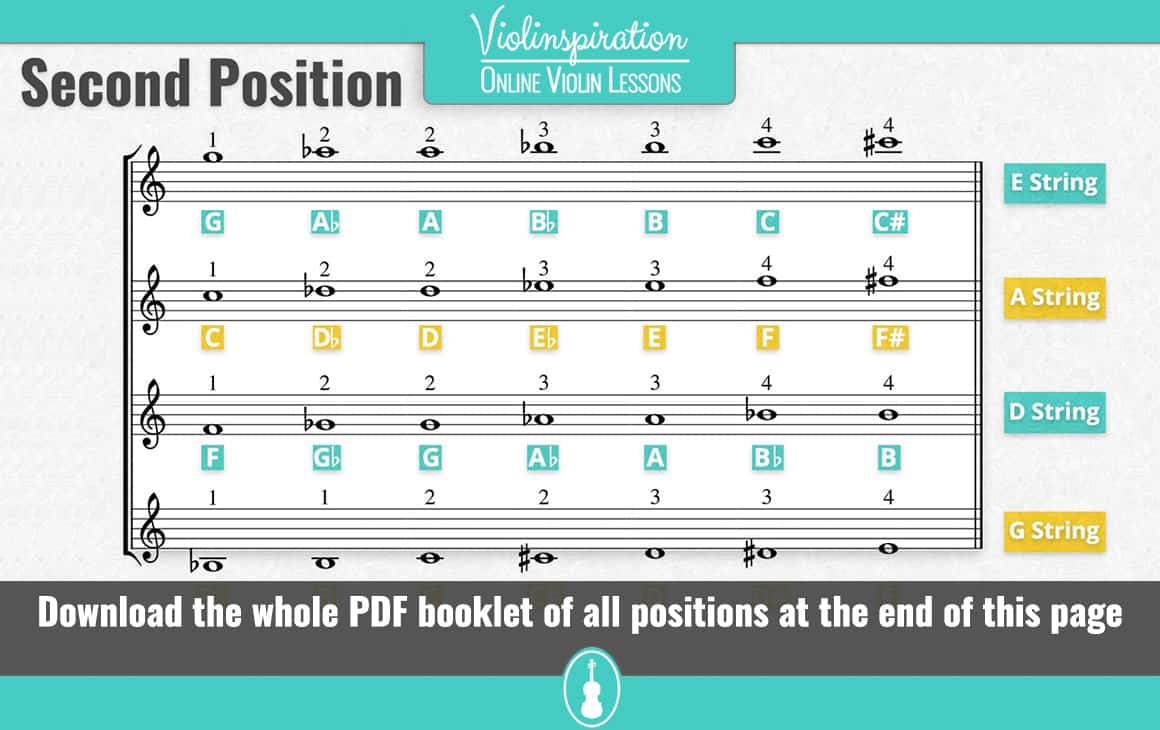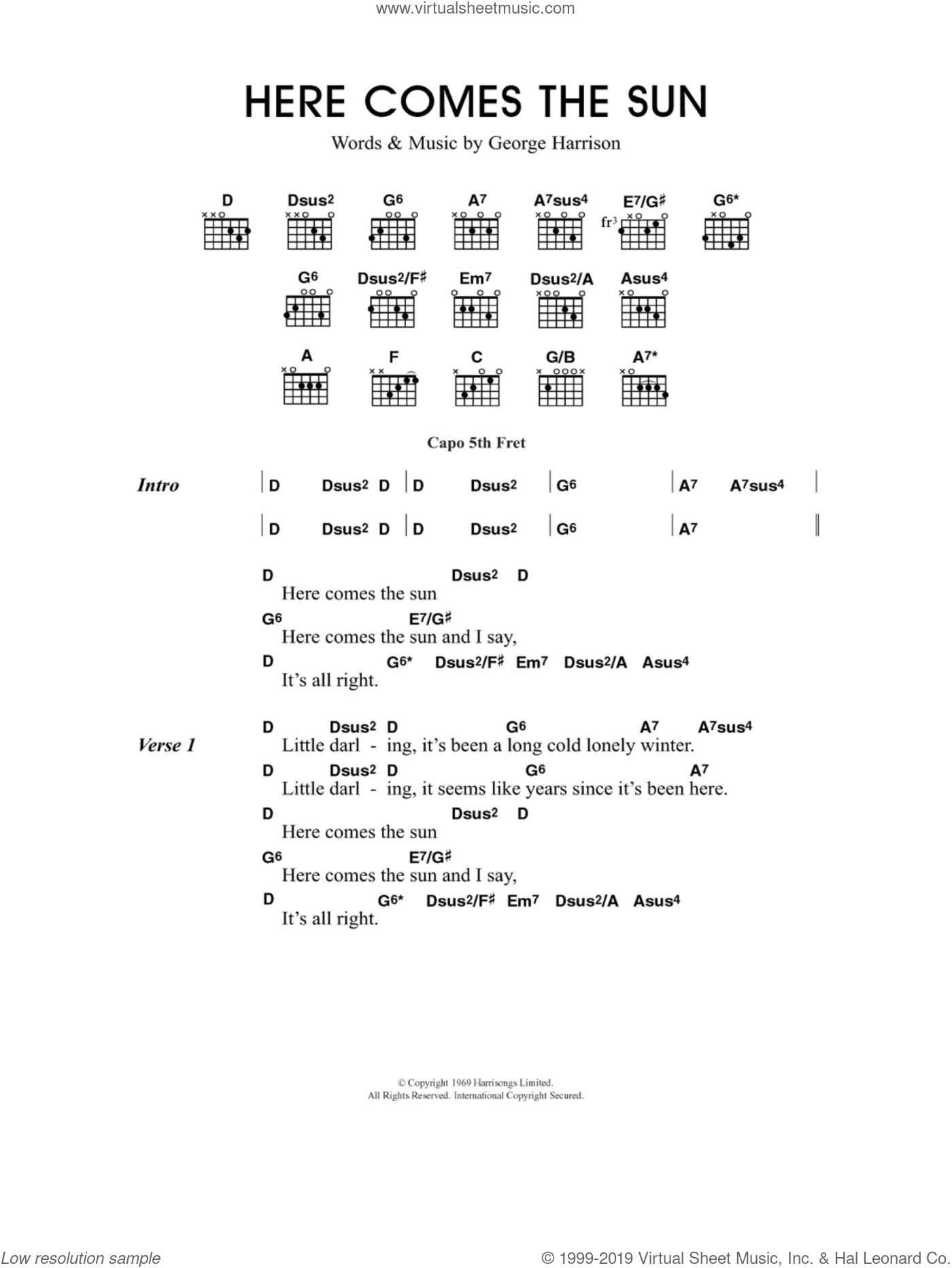Although the violin is traditionally a solo, melodic instrument, you might wonder whether it’s possible to play accompanying, chordal patterns in the same way you play chords on guitar or piano.
The answer is, of course, absolutely yes.
Chord shapes on violins can be highly effective and exactly what you might need to take an accompanying role in a gypsy-jazz, jazz-swing, or folk music.
Here is an example of a basic violin finger chart showing the notes in first position. The letters marked by the black banner at the top of the chart indicate the open strings, G, D, A and E. The blue markings at the side of the chart show the positions where, if you have stickers on your violin.
In this article, we show you how to play the 7 most popular violin chords.
Table of Contents
- This beginner violin fingering chart shows the relation between first position violin notes on a music staff and the notes on a violin fingerboard using a Fretless Finger Guide®.
- One Set of Violin Flashcards. 29 cards - Includes every chromatic note in 1st Position, with Staff Notation, Fingerings, and Note Names. Cards are 2-3/4' square, 110 lb cardstock, with a 1' book ring.
- Violin Chord Chart Diagrams
How to Play Violin Chords
Violin chords are three or more notes simultaneously, as you see below.
However, you can play each note separately to create arpeggios, or play strings in pairs as ‘double stops’. What you’ll achieve will still be a chord-based, rhythmic accompaniment.
As you can see, each finger is given a number (we’ve labeled the thumb, but it isn’t used in violin playing).

Note: in some of the diagrams, you’ll see we mention ‘low 1’ and ‘1’. This simply refers to how stretched out your finger is.
- If it’s a ‘low 1’ your finger should hardly be stretched at all
- If you’re asked to use ‘1’, it should be a little further down, achieving a whole tone higher than your open string.
If you’re interested in learning more about this subject, check out our violin fingering guide.
Violin Chord Chart Diagrams
A Major
Violin Note Chart All Positions
For the A Major shape, use your first finger on the G and D string to play A and E, then use your middle finger for the C# on the A string and your third finger for the high A on the E string.
D Major
D Major has finger 1 on the G string to play an A, finger 2 playing F# on the D string, and your third finger playing D on the A string and A on the E string. You could choose to use your third finger for the D and your pinky for the A; whichever suits you best.
D Major has finger 1 on the G string to play an A, finger 2 playing F# on the D string and your third finger playing D on the A string and A on the E string. You could choose to use your third finger for the D and your pinky for the A; whichever suits you best.
G Major
G Major sees just two fingers: your first finger on B on the A string and your second finger on G on the E string. You can play the G and D strings openly, making this one of the easier shapes to manage.
F Major
F Major has finger 1 on the E string in the low 1, finger 2 playing F on the D string and finger 3 playing C on the G string. You play the A string open, so make sure none of your other fingers are accidentally touching it.
A Minor
The A Minor shape is very similar to A Major. All that’s changed is the C# has been flattened to a C. So, finger 1 plays both A on the G string and E on the D string. Your middle finger plays C on the A string, and your third finger plays A on the E string.
E Minor

E Minor is another quite simple shape. Finger 1 plays E on the D string and B on the A string, whilst your middle finger holds down G on the E string. The G string can be played openly.
B Minor
Finally, B Minor has finger 2 on B on the G string and F# on the D string, whilst your third finger plays D on the A string. Don’t play the E string.
Violin Note Chart Labeled
These chords where you cover more than one string with one finger can feel a bit odd to begin with, but it’s worth persevering as it ensures your fingers stay in the correct position, which makes it easier to move to the next chord.
Violin Note Chart For Beginners
Summary
Violin Note Finger Chart
So, there are have 7 violin chords to work into your practice routine.
Once you have memorized the shapes and have got used to playing them as arpeggios, why not experiment with double-stops and even triple-stops?
Playing multiple strings simultaneously can really bring these shapes to life. Remember, as it’s an accompanying part, focus on the rhythm. If you’re in time, and your fingers are in the right shapes, you can’t go wrong.
Have fun!